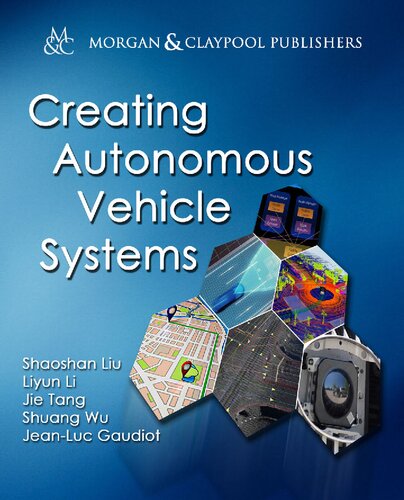

Most ebook files are in PDF format, so you can easily read them using various software such as Foxit Reader or directly on the Google Chrome browser.
Some ebook files are released by publishers in other formats such as .awz, .mobi, .epub, .fb2, etc. You may need to install specific software to read these formats on mobile/PC, such as Calibre.
Please read the tutorial at this link: https://ebookbell.com/faq
We offer FREE conversion to the popular formats you request; however, this may take some time. Therefore, right after payment, please email us, and we will try to provide the service as quickly as possible.
For some exceptional file formats or broken links (if any), please refrain from opening any disputes. Instead, email us first, and we will try to assist within a maximum of 6 hours.
EbookBell Team

4.7
36 reviewsThis book is the first technical overview of autonomous vehicles written for a general computing and engineering audience. The authors share their practical experiences of creating autonomous vehicle systems. These systems are complex, consisting of three major subsystems: (1) algorithms for localization, perception, and planning and control; (2) client systems, such as the robotics operating system and hardware platform; and (3) the cloud platform, which includes data storage, simulation, high-definition (HD) mapping, and deep learning model training. The algorithm subsystem extracts meaningful information from sensor raw data to understand its environment and make decisions about its actions. The client subsystem integrates these algorithms to meet real-time and reliability requirements. The cloud platform provides offline computing and storage capabilities for autonomous vehicles. Using the cloud platform, we are able to test new algorithms and update the HD mapplus, train better recognition, tracking, and decision models.
This book consists of nine chapters. Chapter 1 provides an overview of autonomous vehicle systems; Chapter 2 focuses on localization technologies; Chapter 3 discusses traditional techniques used for perception; Chapter 4 discusses deep learning based techniques for perception; Chapter 5 introduces the planning and control sub-system, especially prediction and routing technologies; Chapter 6 focuses on motion planning and feedback control of the planning and control subsystem; Chapter 7 introduces reinforcement learning-based planning and control; Chapter 8 delves into the details of client systems design; and Chapter 9 provides the details of cloud platforms for autonomous driving.
This book should be useful to students, researchers, and practitioners alike. Whether you are an undergraduate or a graduate student interested in autonomous driving, you will find herein a comprehensive overview of the whole autonomous vehicle technology stack. If you are an autonomous driving practitioner, the many practical techniques introduced in this book will be of interest to you. Researchers will also find plenty of references for an effective, deeper exploration of the various technologies.